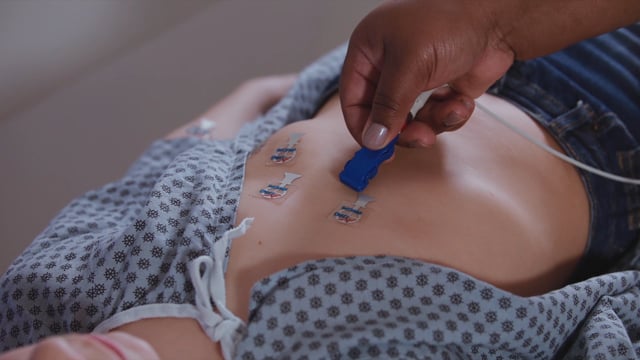ECG (Electrocardiogram)
What’s an Electrocardiogram (ECG or EKG)?
An electrocardiogram (ECG or EKG) measures the heart’s electrical activity. This can help doctors tell how the heart is working and identify any problems.
The ECG can help show the rate and regularity of heartbeats, the size and position of the heart’s chambers, and whether there is any damage.
How Is an ECG Done?
There is nothing painful about getting an ECG. The patient is asked to lie down, and small metal tabs (called electrodes) are fixed to the skin with sticky papers. These electrodes are placed in a standard pattern on the shoulders, the chest, the wrists, and the ankles.
After the electrodes are in place, the person is asked to hold still and, perhaps, to hold his or her breath briefly while the heartbeats are recorded for a short period. The patient also might be asked to get up and exercise for a while.
The information is interpreted by a machine and drawn as a graph. The graph shows multiple waves, which reflect the activity of the heart. The height, length, and frequency of the waves are read in the following way:
- The number of waves per minute on the graph is the heart rate.
- The distances between these waves is the heart rhythm.
- The shapes of the waves show how well the heart’s electrical impulses are working, the size of the heart, and how well the individual parts of the heart are working together.
- The consistency of the waves provides fairly specific information about any heart damage.
-

Getting an EKG
An EKG records the heart’s activity through small wires taped to your body.
What Can an ECG Diagnose?
A person’s heartbeat should be consistent and even. ECGs look for abnormally slow and fast heart rates, abnormal rhythm patterns, conduction blocks (short-circuits of the heart’s electrical impulses that cause rhythm inconsistencies between the upper and lower chambers) — and four types of heart damage:
- ventricular hypertrophy — an abnormal thickening of the heart muscle
- ischemia — caused by an abnormally decreased blood supply
- cardiomyopathies — abnormalities in the heart muscle itself
- electrolyte and drug disturbances — these can change the heart’s electrochemical environment
Computerized ECGs can be used with other tests to get a multimedia account of the heart. These other tests include echocardiograms (which are basically “ultrasound” tests that bounce sound off the heart and use the echoes to make an image) and thallium scans (which are kind of like X-rays and use a radioactive tracer, injected into the bloodstream, to help draw a picture of the heart).
In the past, the ECG was recorded on a machine that drew on long strips of paper, with records from each electrode presented in a standard sequence. Now the ECG tracings are stored as computer files that can be called up and printed.
When Are Results Ready?
Results of the ECG are available immediately. In fact, the ECG machine’s computer even provides an instant interpretation of the findings as it makes the report. However, the doctor also might ask an expert, usually a cardiologist, to help analyze and interpret the ECG. Some of the ECG results may be subtle, requiring an expert eye to detect them.
